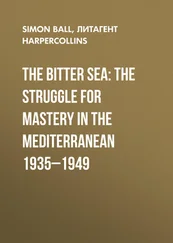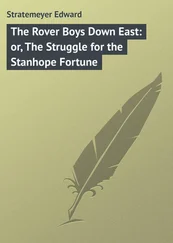Чарльз Дарвин - The Origin of Species by Means of Natural Selection Or, the Preservation of Favoured Races in the Struggle for Life
Здесь есть возможность читать онлайн «Чарльз Дарвин - The Origin of Species by Means of Natural Selection Or, the Preservation of Favoured Races in the Struggle for Life» весь текст электронной книги совершенно бесплатно (целиком полную версию без сокращений). В некоторых случаях можно слушать аудио, скачать через торрент в формате fb2 и присутствует краткое содержание. Год выпуска: 1999, Жанр: Биология, на английском языке. Описание произведения, (предисловие) а так же отзывы посетителей доступны на портале библиотеки ЛибКат.
- Название:The Origin of Species by Means of Natural Selection Or, the Preservation of Favoured Races in the Struggle for Life
- Автор:
- Жанр:
- Год:1999
- ISBN:нет данных
- Рейтинг книги:3 / 5. Голосов: 1
-
Избранное:Добавить в избранное
- Отзывы:
-
Ваша оценка:
- 60
- 1
- 2
- 3
- 4
- 5
The Origin of Species by Means of Natural Selection Or, the Preservation of Favoured Races in the Struggle for Life: краткое содержание, описание и аннотация
Предлагаем к чтению аннотацию, описание, краткое содержание или предисловие (зависит от того, что написал сам автор книги «The Origin of Species by Means of Natural Selection Or, the Preservation of Favoured Races in the Struggle for Life»). Если вы не нашли необходимую информацию о книге — напишите в комментариях, мы постараемся отыскать её.
The Origin of Species by Means of Natural Selection Or, the Preservation of Favoured Races in the Struggle for Life — читать онлайн бесплатно полную книгу (весь текст) целиком
Ниже представлен текст книги, разбитый по страницам. Система сохранения места последней прочитанной страницы, позволяет с удобством читать онлайн бесплатно книгу «The Origin of Species by Means of Natural Selection Or, the Preservation of Favoured Races in the Struggle for Life», без необходимости каждый раз заново искать на чём Вы остановились. Поставьте закладку, и сможете в любой момент перейти на страницу, на которой закончили чтение.
Интервал:
Закладка:
On these same principles we can understand, as I have endeavoured to show, why oceanic islands should have few inhabitants, but that of these, a large proportion should be endemic or peculiar; and why, in relation to the means of migration, one group of beings should have all its species peculiar, and another group, even within the same class, should have all its species the same with those in an adjoining quarter of the world. We can see why whole groups of organisms, as batrachians and terrestrial mammals, should be absent from oceanic islands, whilst the most isolated islands should possess their own peculiar species of aerial mammals or bats. We can see why, in islands, there should be some relation between the presence of mammals, in a more or less modified condition, and the depth of the sea between such islands and the mainland. We can clearly see why all the inhabitants of an archipelago, though specifically distinct on the several islets, should be closely related to each other, and should likewise be related, but less closely, to those of the nearest continent, or other source whence immigrants might have been derived. We can see why, if there exist very closely allied or representative species in two areas, however distant from each other, some identical species will almost always there be found.
As the late Edward Forbes often insisted, there is a striking parallelism in the laws of life throughout time and space; the laws governing the succession of forms in past times being nearly the same with those governing at the present time the differences in different areas. We see this in many facts. The endurance of each species and group of species is continuous in time; for the apparent exceptions to the rule are so few that they may fairly be attributed to our not having as yet discovered in an intermediate deposit certain forms which are absent in it, but which occur above and below: so in space, it certainly is the general rule that the area inhabited by a single species, or by a group of species, is continuous, and the exceptions, which are not rare, may, as I have attempted to show, be accounted for by former migrations under different circumstances, or through occasional means of transport, or by the species having become extinct in the intermediate tracts. Both in time and space species and groups of species have their points of maximum development. Groups of species, living during the same period of time, or living within the same area, are often characterised by trifling features in common, as of sculpture or colour. In looking to the long succession of past ages, as in looking to distant provinces throughout the world, we find that species in certain classes differ little from each other, whilst those in another class, or only in a different section of the same order, differ greatly from each other. In both time and space the lowly organised members of each class generally change less than the highly organised; but there are in both cases marked exceptions to the rule. According to our theory, these several relations throughout time and space are intelligible; for whether we look to the allied forms of life which have changed during successive ages, or to those which have changed after having migrated into distant quarters, in both cases they are connected by the same bond of ordinary generation; in both cases the laws of variation have been the same, and modifications have been accumulated by the same means of natural selection.
CHAPTER XIV.
MUTUAL AFFINITIES OF ORGANIC BEINGS:
MORPHOLOGY—EMBRYOLOGY—RUDIMENTARY ORGANS.
Classification, groups subordinate to groups—Natural system—Rules and difficulties in classification, explained on the theory of descent with modification—Classification of varieties—Descent always used in classification—Analogical or adaptive characters—Affinities, general, complex and radiating—Extinction separates and defines groups—Morphology, between members of the same class, between parts of the same individual—Embryology, laws of, explained by variations not supervening at an early age, and being inherited at a corresponding age—Rudimentary organs; their origin explained—Summary.
CLASSIFICATION.
From the most remote period in the history of the world organic beings have been found to resemble each other in descending degrees, so that they can be classed in groups under groups. This classification is not arbitrary like the grouping of the stars in constellations. The existence of groups would have been of simple significance, if one group had been exclusively fitted to inhabit the land, and another the water; one to feed on flesh, another on vegetable matter, and so on; but the case is widely different, for it is notorious how commonly members of even the same subgroup have different habits. In the second and fourth chapters, on Variation and on Natural Selection, I have attempted to show that within each country it is the widely ranging, the much diffused and common, that is the dominant species, belonging to the larger genera in each class, which vary most. The varieties, or incipient species, thus produced, ultimately become converted into new and distinct species; and these, on the principle of inheritance, tend to produce other new and dominant species. Consequently the groups which are now large, and which generally include many dominant species, tend to go on increasing in size. I further attempted to show that from the varying descendants of each species trying to occupy as many and as different places as possible in the economy of nature, they constantly tend to diverge in character. This latter conclusion is supported by observing the great diversity of forms, which, in any small area, come into the closest competition, and by certain facts in naturalisation.
I attempted also to show that there is a steady tendency in the forms which are increasing in number and diverging in character, to supplant and exterminate the preceding, less divergent and less improved forms. I request the reader to turn to the diagram illustrating the action, as formerly explained, of these several principles; and he will see that the inevitable result is, that the modified descendants proceeding from one progenitor become broken up into groups subordinate to groups. In the diagram each letter on the uppermost line may represent a genus including several species; and the whole of the genera along this upper line form together one class, for all are descended from one ancient parent, and, consequently, have inherited something in common. But the three genera on the left hand have, on this same principle, much in common, and form a subfamily, distinct from that containing the next two genera on the right hand, which diverged from a common parent at the fifth stage of descent. These five genera have also much in common, though less than when grouped in subfamilies; and they form a family distinct from that containing the three genera still further to the right hand, which diverged at an earlier period. And all these genera, descended from (A), form an order distinct from the genera descended from (I). So that we here have many species descended from a single progenitor grouped into genera; and the genera into subfamilies, families and orders, all under one great class. The grand fact of the natural subordination of organic beings in groups under groups, which, from its familiarity, does not always sufficiently strike us, is in my judgment thus explained. No doubt organic beings, like all other objects, can be classed in many ways, either artificially by single characters, or more naturally by a number of characters. We know, for instance, that minerals and the elemental substances can be thus arranged. In this case there is of course no relation to genealogical succession, and no cause can at present be assigned for their falling into groups. But with organic beings the case is different, and the view above given accords with their natural arrangement in group under group; and no other explanation has ever been attempted.
Читать дальшеИнтервал:
Закладка:
Похожие книги на «The Origin of Species by Means of Natural Selection Or, the Preservation of Favoured Races in the Struggle for Life»
Представляем Вашему вниманию похожие книги на «The Origin of Species by Means of Natural Selection Or, the Preservation of Favoured Races in the Struggle for Life» списком для выбора. Мы отобрали схожую по названию и смыслу литературу в надежде предоставить читателям больше вариантов отыскать новые, интересные, ещё непрочитанные произведения.
Обсуждение, отзывы о книге «The Origin of Species by Means of Natural Selection Or, the Preservation of Favoured Races in the Struggle for Life» и просто собственные мнения читателей. Оставьте ваши комментарии, напишите, что Вы думаете о произведении, его смысле или главных героях. Укажите что конкретно понравилось, а что нет, и почему Вы так считаете.












